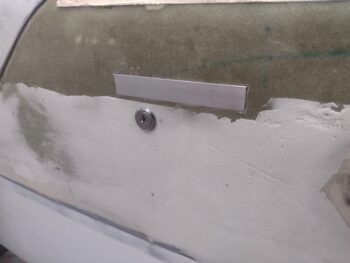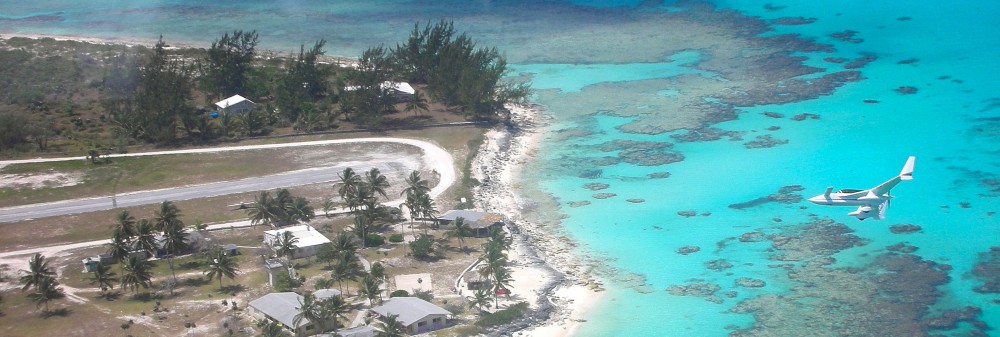Today I started out by finishing up my micro strip addition just underneath the canopy’s left lip on the forward 1/3 of the canopy.
This micro along the canopy serves a couple of purposes: First, it essentially serves to widen the longeron under the canopy lip to create a smooth, even flow from canopy lip surface to fuselage/longeron/strake. This characteristic is more prevalent on the aft half of the canopy to longeron seam.
Second, and possibly more important aesthetics-wise, this micro strip fills in the pronounced original curve of the longeron and creates a straighter line from fuselage/ longeron surface to the canopy lip edge. This issue is much more noticeable on the forward half of the canopy and increases up to the front corner of the canopy lip.

I’ll note that my finishing “fix” action in regards to this left side canopy lip to longeron interface is essentially a ‘hard-shelling’ operation in that I will sand the micro smooth and blend it in even with the strip of exposed fiberglass just underneath of it. I will then lay up a ply of BID across this fiberglass-micro junction, covering all of the micro. This will reinforce the micro and keep it from chipping if a foot, hand, luggage (whatever) dings against it.
I will then finalize the external side of this finishing by adding more micro to connect this new fuselage/longeron-side filler lip to the strake and fuselage side wall. From there I’ll treat it as a normal micro finishing task as I sand it all to contour and then epoxy wipe [that still leaves the inside edge of this process, which I’ll cover when I get to it].
Now, with the strip of remaining pour foam that I just recently added to the front vertical edge of the glare shield (below), I applied somewhat wet micro to the aft side and top of the foam, before peel plying the foam edge. Again, this will be somewhat of a ‘hard shelling’ operation as well, in that once I get the foam/micro shaped just right, I will then laying up a single piece of carbon fiber to the glare shield and along this vertical wall of this added foam and micro. I’ll then deal with the top strip of exposed foam and micro as well (most likely a thin strip of carbon fiber with a flox corner to the previous CF layup above).

My next task involving epoxy was to whip up some wet flox to use in securing the bronze oil sleeve into the canopy latch handle middle block. Just prior to slathering up the bronze oil sleeve, I hit the outer surface with the Dremel tool to create some flox-gripping grooves. I then clamped it tightly into place. Here’s what that looks like:

Now, why did I flox the bronze oil sleeve bearing into the handle assembly middle block? Well, I noticed just recently that when opening and closing the canopy, and locking and unlocking it as well, I wasn’t getting a full throw of the canopy latch catch hooks fore and aft.
Something was askew… and interestingly I had already taken the pics to show the newly installed canopy latch interior lock when I noted the bronze oil sleeve slipping out of the center block. Apparently, a week-plus of constant operation on the canopy handle loosened up the press fit between harder bronze oil sleeve and softer aluminum middle block, allowing the sleeve to come loose and exit out of its installed position. I figured flox (or silicone RTV) was the best way to secure it in place, so I went with that.

Obviously better to have this happen now and find out this issue at this point versus when flying out and about.
I also spent a good chunk of time today assessing and planning out the EXTERNAL canopy handle lock positioning, operation, configuration, etc. I actually have 2 of these style of locks on hand, one being a bulkier stainless steel lock and the other being a lower profile (chrome?) one.
I assessed the install depth and operation of each lock, and it appeared that the cheaper(?) lower profile lock simply functioned smoother with less fiddly-ness when it came to inserting and rotating the key. The barrel is also slightly narrower in diameter and shorter, so although it didn’t have the sexier finish between the two locks, it won in all the other aspects.
So here we have the lock position determined and the initial hole drilled into the fuselage sidewall just under the handle. I have to say I originally planned on placing this lock on the forward (left) edge of the handle, to avoid the 1/4″ Nyla-flo electrical wire conduit running in the sidewall just under the canopy handle (turns out, not the best spot). Thus, while a royal pain in dealing with my crazy accidental wire cutting issue at the under-longeron GIB Lights switch box… it is now proving quite serendipitous that I had to run those wires under the longeron (vs thru the sidewall conduit) since I will most likely need to cut and remove a decent sized section of the Nyla-flo to create a slot for the lock’s pivoting latch arm.
-

-

I’ll continue to work on getting the lock installed into the side wall, with the pivoting latch arm operational, but I am highly considering not machine the interfacing slot into the handle until the exterior paint on the fuselage sidewall is complete (more thought required).
Which leads me to my final task of the evening: sanding the added micro just under the canopy lip on the left side, to ensure a smooth transition from added micro to the fiberglass just underneath of it.

I had planned on doing more work in knocking out the 1-ply BID layup along this added strip of micro, but it was getting quite late and the temp had dropped quite a bit outside, thus inside the shop as well. I’ll kick this can ’til tomorrow.
Rock ‘n roll . . .






















































































